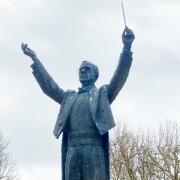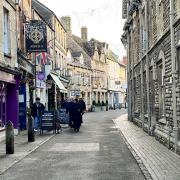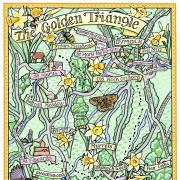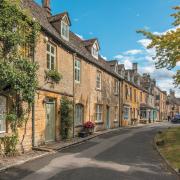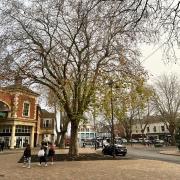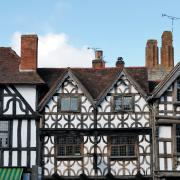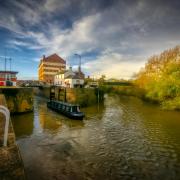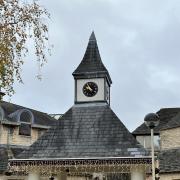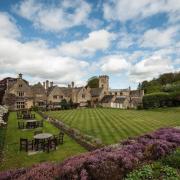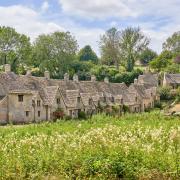Now, I do enjoy writing a ‘ten of something’. You may have seen some of my previous offerings. It’s multiple stories in bite-sized chunks rather than a long-winded narrative on one subject. I’ve decided to tackle ‘10 Cotswold villages’ but have declined to try and conjure up a top ten which I judge to be a thankless task and likely to result in a serious swelling of the editor’s post bag and/or inbox.
Instead, I’m going for ten villages that mean something to me. I hope you appreciate this alternative approach, but if you don’t you may still write to our lovely editor (please keep it gracious, though!).

Upper Slaughter, Gloucestershire
So, as per my intro, not all my villages will be obvious ones, but I guess Upper Slaughter shouldn’t be a surprise. It has a tributary of the Windrush running through with a picturesque ford which is much photographed, including by your author, with those ubiquitous Cotswold stone cottages surrounding the scene. There’s a 17th-century parsonage, an Elizabethan manor that’s ‘visually satisfying’, and a church with Norman bits, plus a rare 14th-century ‘sanctus bellcot’ (or bellcote): the structure housing the bell rung at the consecration of the Eucharist. When I was last here daffs swayed in the wind, a scene Wordsworth would have relished. Lower Slaughter’s not bad either.

Fladbury, Worcestershire
I can’t recall why I was in the Slaughters, but I know it was Cotswold Life business, as was my visit to Fladbury in January 2015 with the 750th anniversary of the Battle of Evesham looming. I spent my first 18 years in villages, and Fladbury is the first I can remember with Fladbury C of E First School having been my initial, albeit brief, alma mater. Across the Avon from the black-and-white cottages of Cropthorne, Fladbury has an old inn, watermill (Fladbury Mill) and Norman church which has 14th-century stained glass, believed rescued from dissolved Evesham Abbey, and depicting the heraldic arms of some of the barons involved in the dust up.

Toddington, Gloucestershire
Twice I’ve written about the Gloucestershire Warwickshire Steam Railway and the village of Toddington lies on the line. It’s curiously in two parts named ‘town’, the ‘New Town’ and ‘Old Town’ which hangs about near the church, the relatively large St Andrew’s, in what is indisputably a village, but one with north of 400 souls to its name these days. There’s a pub and shop plus a manor – Toddington Manor – which lies between the two ‘towns’. I understand this is owned by the artist Damien Hirst – often considered ‘Marmite’, but actually a Turner Prize-winning one. The railway station is a little gem, everything that a heritage one should be. First opened in 1904, it closed in the ’60s, but reopened in 1984.

Minster Lovell, Oxfordshire
I love Minster Lovell (Cotswold Life, October 2019 issue) because of the story about one of Richard III’s henchmen, Francis Lovell, who may or may not have become incarcerated in his family’s pile. Although it has mysterious and tragic stories associated with it, it is nevertheless one of the most romantic of ruins and it’s nestled in one of the prettiest of the Windrush villages. There’s also a Perpendicular church which has fine vaulting under its central tower, and the Old Swan which became a home from home for the author, ‘Mrs Steve’ and other associated family members one Christmas.

Bourton-on-the-Water, Gloucestershire
I thought I must give you another that you’ll be expecting, Bourton-on-the-Water, which I frequently pass on my way betwixt Cirencester and Stow. I was there on magazine business again though, searching out one of its more famous sons, Dudley Johnson VC (November 2018). Even these most idyllic places can spawn servicemen of the first order. As for the ‘Water’ in Bourton-on-the-Water, it’s that Windrush again, flowing alongside the main street, bordered by lawn, crossed by low-arched bridges, and with Cotswold stone as backdrop; picture perfect. There’s an old mill, and the village in miniature, plus the essential church with chancel of 1328.

Elmley Castle, Worcestershire
There are many pretty villages surrounding Bredon Hill but none better than Elmley Castle. And yes, it had a castle, built around the time of Domesday, which became important as a seat of Beauchamp power, but a fall from grace, into decay, led to stone being pilfered to build, among other things, Pershore bridge, although the bridge’s info board states it was ‘to make repairs’. The remaining pub is ‘The Queen Elizabeth Inn’ recalling a stopover at the mansion by the Virgin Queen in 1575. ‘Mrs Steve’ and I stayed at the other pub (now sadly closed); an occasion enlivened by an unscheduled visit to Evesham’s Minor Injuries Unit after my wife ‘fell off the kerb’ (outside the pub).

Adlestrop, Gloucestershire
I like railways and I like poetry and the two conflated at Adlestrop when I wrote about Edward Thomas (April 2017). Thomas (1878-1917) wrote ‘Adlestrop’ when his train stopped here, at the little station on today’s Cotswold Line, in June 1914, the last of the summer days before WW1. The station was a Beeching closure in 1966, so the poem is a lament for both closed rural stations and the poet, killed in action at Arras. The village has a lot more than a view off a roadbridge over the station site. There’s a station nameboard adorning a bus shelter, St Mary Magdalene’s church, the old rectory where Jane Austen stayed, and Cotswold stone as good as anywhere.

Blockley, Gloucestershire
We associate Cotswold villages with rural life but occasionally find one that had industry at its heart. I visited Blockley in November 2016, sniffing out industrial antecedents. Here is a community of some 2,000 that once had a plethora of silk mills and those mills, now private houses, and the old workers’ cottages, remain like sentinels to a former age. The Blockley mills once numbered half-a-dozen with some 600 employed as the fast-flowing brook powered the village enterprise. The village has a unique character because of its past but its present is welcoming with a Norman church, modern village shop and café and familiar vistas courtesy of TV series ‘Father Brown’.

Bladon, Oxfordshire
It was a few years ago that I wrote about Bladon (January 2015 issue). It was, of course, the 50th anniversary of Sir Winston Churchill’s death, and I’d come to nod at his grave in the village churchyard. His was the last state funeral in the UK prior to that of HM Queen Elizabeth II and the last non-royal state funeral. St Martin’s has Norman roots but was rebuilt in the 19th century, whilst its churchyard is notable not only as the final resting place of the WW2 leader, but also other members of the Spencer-Churchill family. On January 30, 1965, Churchill’s funeral train arrived at today’s Hanborough station, the closest stop to Bladon by that time; they’re around 1¼ miles apart.

Down Ampney, Gloucestershire
I was on a Cotswold Life assignment (again) when I rocked up in Down Ampney, the birthplace of the eminent composer Ralph Vaughan Williams (1872-1958). Yes, that was my brief but what I found transcended that story, a charming village that takes the most plaudits of all the Ampneys of the Upper Thames. There’s an old village cross (restored) surrounded by venerable cottages, a Tudor manor house of beautifully gabled persuasion, and an Early English parish church which has a fine tower topped with a spire and gilded weathercock. The chapel in the south transept has two recumbents of the 14th century, one of them a Crusader whilst RVW was born in the Old Vicarage.
References
The Shell Guide to England (Ed. J. Hadfield, 1973)
Discovering Castles in England and Wales (J. Kinross, 1973)
Chambers Biographical Dictionary (1974)
Gloucestershire Warwickshire Steam Railway (gwsr.com)
Cotswolds Information & Tourist Guide (cotswolds.info)




